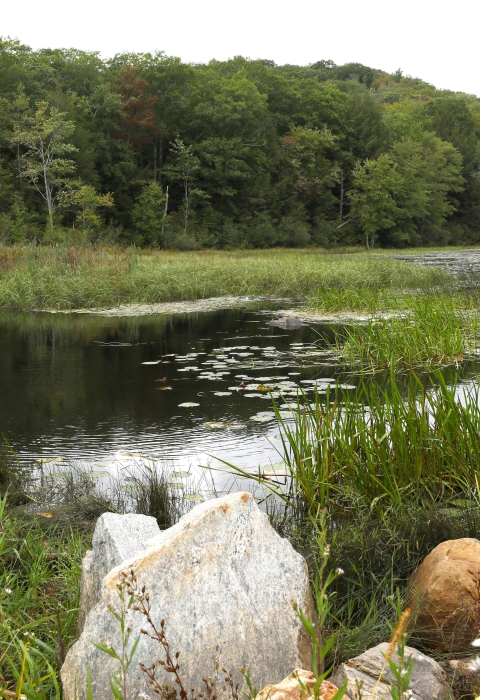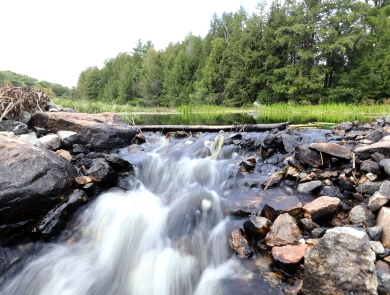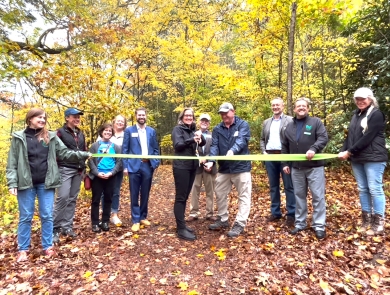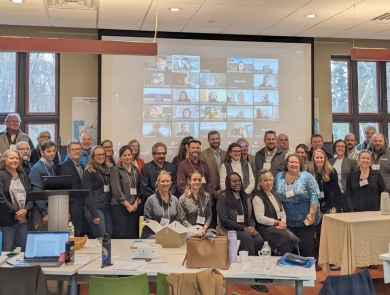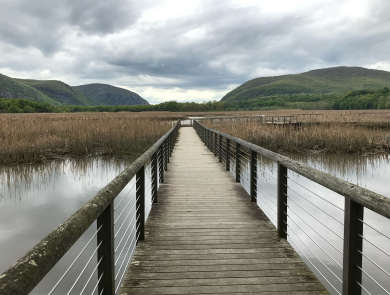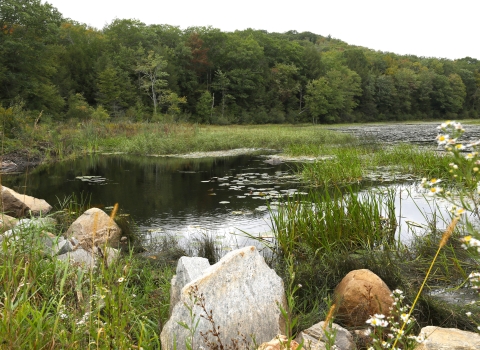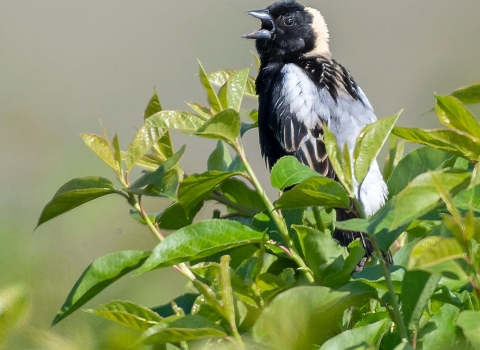This iconic landscape is distinguished by Appalachian ridges, hills, and plateaus. It is marked by deciduous and coniferous forests, streams and lakes, and thousands of plant and animal species. It is not only ecologically diverse, but sustains forest management, working farms, nature-oriented recreational opportunities, and clean water for the many people who live in the region.
Since the passage of the Highlands Conservation Act in 2004, $48 million in federal funds, matched by $74 million in non-federal funds, have been awarded to permanently protect 16,226 acres of land. Projects supported by the Highlands Conservation Act grant program are led by state agencies and address lands that support key conservation objectives outlined in the Highlands Conservation Act such as clean drinking water, healthy forests, thriving wildlife populations, productive agriculture, and abundant recreational opportunities.
Projects and Research
The Connecticut Highlands region encompasses Appalachian hills and valleys extending throughout Litchfield county and beyond. Projects in the state are conserving important wildlife habitat, creating new outdoor recreational areas and protecting drinking water supplies for residents in and around Danbury, Goshen and West Simsbury to name a few, and it is in close proximity...
The New Jersey Highlands region encompasses Appalachian hills and valleys extending from Passaic county and the lower half of Sussex county across northern New Jersey through Warren and Hunterdon counties. Projects in the state are conserving important wildlife habitat, creating new outdoor recreational areas and protecting drinking water supplies for residents in and around...
The New York Highlands region encompasses Appalachian hills and valleys extending from Pawling and Southeast county at the Connecticut border, following the Hudson Highland mountains, across the Hudson River, and continues on to Warwick and Ramapo counties at the New Jersey border. Projects in the state are conserving important wildlife habitat, creating new outdoor...
The Pennsylvania Highlands region encompasses Appalachian hills and valleys extending from the Allentown area in the northeast down to Harrisburg and the Susquehanna River in the southeast. Projects in the state are conserving important wildlife habitat, creating new outdoor recreational areas and protecting drinking water supplies for residents in and around Lehigh Valley, Reading and...
